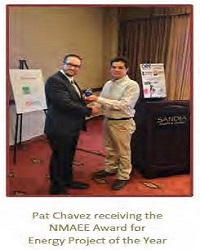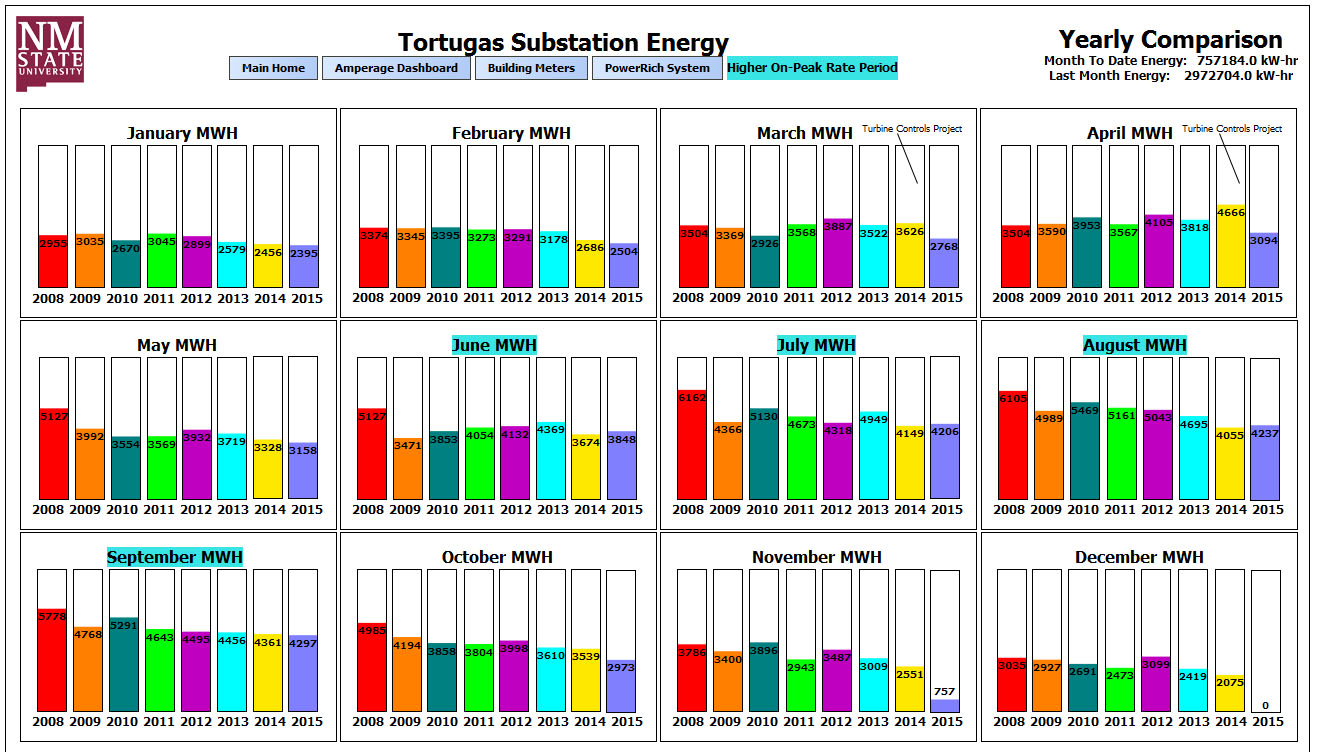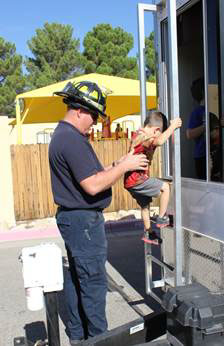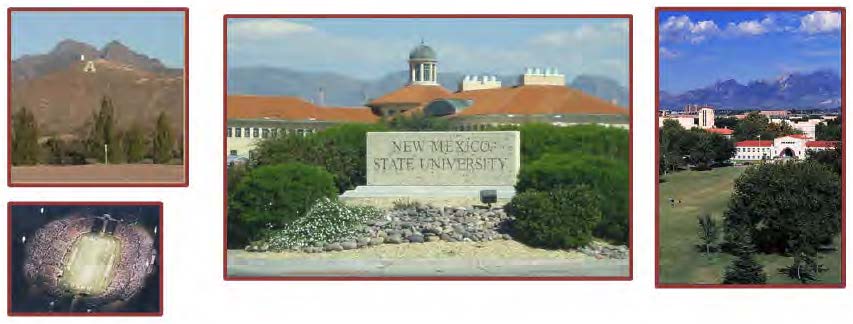8.0 OTHER CONSIDERATIONS
THIS SECTION INCLUDES ITEMS AND SUBJECTS THAT ARE NOT COVERED BY THE CRITERIA IN SECTIONS 1 THROUGH 7 AND HAS CAMPUS SPECIFIC ACCOMPLISHMENTS.
As we approached the development of the Internal Advisory Committee , we were familiar with the great work that Chris Ahoy did at Iowa State University. Their facility organization won the Iowa Recognition for Performance Excellence based on the Malcolm Baldridge Award. We contacted Mr. Ahoy when we structured our Internal Advisory Committee , and used many of his ideas in the development of ours. 119
Representatives from all units are invited to participate on the Internal Advisory Committee . The goal of this committee is to provide a venue for the expression of concerns, idea, and suggestions that impact all areas in Facilities and Services. The first assignment for the committee was to review the organizational name, the mission statement , the goals, and the values, and this was extremely helpful as the various strategic plans were developed. The committee has made decisions about yard access as relates to the vehicular and personnel entrances, and they provided input into the trades’ license reimbursement process and the essential personnel program that resulted in changes to the procedures. On a more casual note, the internal advisory committee plans the Annual Picnic. 120 We asked the committee for input on the new uniforms, and what followed was a significant amount of discussion about the role of the committee. This committee has been a learning process for us, but is one that we feel is worthwhile.
The NMSU Office of Sustainability is a resource for the campus community to develop and promote a common vision of sustainability through innovation, education, and action. Reducing the university’s ecological footprint is a goal. 121 In 2012, the Sustainability Manager led a team that achieved a rating of Gold in STARS, the Sustainability Tracking, Assessment and Rating System developed by the Association for the Advancement of Sustainability in Higher Education (AASHE). 122 Other activities include updating and reporting on the American College and University Presidents Climate Commitment (ACUPCC), and keeping the Climate Action Plan current. 123 The Sustainability Manager oversaw construction of the Environmental Education Center, and the office supported and encouraged the installation of 39 bottle filling stations on campus. The Sustainability Manager prepares an annual report, and information about our activities is listed on the Sustainability and WeCARE (Energy Performance Contract) websites. 124
The Ameresco Energy Performance Contract Project won the 2015 New Mexico Association of Energy Engineer’s Energy Project of the Year award (NMAEE). NMSU entered into an energy performance contract with Ameresco, an energy services company. As of this summer, the university has seen a significant reduction in the campus energy consumption. 125
Environmental Health and Safety (EHS) provides safety services statewide to the Carlsbad Environmental Monitoring and Research Center, four remote campuses, twelve Agricultural Science Centers, and the Veterinary Diagnostic Center. These services include conducting safety training, issuing driver’s permits for university vehicles, facility inspections, safety equipment evaluations, chemical inventories, lab and shop reviews including hazardous materials assessments, work site reviews, complaint responses, accident investigations, and facilitation of asbestos, radioactive and hazardous waste disposal. EHS is the designated liaison with external regulatory agencies and maintains radioactive materials licenses and x‐ray registrations for these facilities.
Loss Prevention Loss Control (LPLC) efforts are a top priority work at NMSU. One third of the LPLC committee membership is Facilities and Services leadership. The committee analyzes insurable losses and works to implement changes to mitigate the loss. EHS leads the charge and maintains a low injury rate through a wide scope of training, inspections and timely facility repairs to improve workplace safety and ultimately reduce medical costs, lost work and insurance premiums. EHS provides NMSU with an aggressive, proactive loss prevention and control program using a multi‐faceted approach that employs safety surveillance of workers and the workplace as well as after the fact injury investigation to prevent similar incidents.
In particular, the Carlsbad Environmental Monitoring and Research Center is a unique facility. This 26,000 gross square foot facility includes environmental and general radiochemistry laboratories, a special plutonium‐uranium lab, an in vivo bioassay facility, mobile laboratories, computing operations, and offices. The facility can perform a wide range of environmental and radiochemistry work, characterization, monitoring, feasibility studies in support of performance assessment, radiological and environmental training and education, subsurface flow and transport experiments, nuclear energy issues, and issues involving Homeland Security, particularly those involving radiation dispersal devices (dirty bombs).
In addition to providing regulatory guidance to faculty and staff, EHS department personnel provide research protocol review, experimental plan assistance, annual inspections, and hazardous material disposal for research. All of these services are integral to lowering risk and undertaking safe and legally compliant work. EHS is a regular member on two of the faculty research oversight committees, serves as chair on three university boards, and supports membership in five additional university committees.
EHS provides a detailed annual report on their website that highlights their significant accomplishments. 126
Back to TopUnlike many universities where the local or municipal fire department provides services to the campus, the NMSU Fire Department (FD) is partially funded by Doña Ana County and provides services to surrounding communities as well as on the NMSU Las Cruces campus. Our FD is a unique program in that 70% of our firefighters are full‐time students at either NMSU’s main campus or Doña Ana Community College. Through this program, students are allowed to explore a career of firefighting and earn a degree.
The remainder of the team is staffed by a career Fire Chief, Deputy Fire Chief, two Fire Captains, two daytime Firefighters and one administrative professional. The two career firefighters and Deputy Fire Chief were added in 2014 as part of the internal budget process, and this had a significant impact on our response capability. This organizational move also provided an opportunity to develop a Fire Prevention Program. The FD provides fire code review for all building renovations and new construction on NMSU’s main campus.
Recent accomplishments include the adoption of a compliance‐testing standard for all fire detection and suppression systems, a shift to paperless forms, and development of a hot work and impairment process. 127 Also, FD personnel now accomplish eyewash and emergency shower inspections. Eighty‐seven inspections were completed as part of the fire safety building inspection program. The FD partners closely with the Facilities and Services Executive Director of Operations to ensure corrective actions are completed.
The FD received a new Public Protection Classification from the Insurance Service Office (ISO) in 2014. The ISO Public Protection Classification plays an important role in the underwriting process at insurance companies. Insurance companies use these ratings as they develop rates for customers, so in that sense the efforts by the NMSU Fire Department may play a role in lower premiums for homeowners surrounding the campus.
ISO grades on three areas: Fire Department, Water Supply, and Emergency Dispatch Reporting. The grading scale is one to ten, in which one is the highest score. NMSU’s previous classification was a 5/9; our new classification is a 3/3X. A lower number generally equates to a lower premium. Our new rating demonstrates NMSU’s commitment to risk reduction and continued efforts in making our community safer for our students, faculty, staff and visitors. 128
The FD provides emergency medical standby for most athletic and special events held on NMSU main campus. We continue to identify opportunities to engage with our community. This year, we had one of our staff certified as a National Child Passenger Safety technician.
As a unique program we are asked to speak with prospective students about career opportunities in the fire and emergency medical fields. The FD serves on the advisory board to Doña Ana Community College for both the Law Enforcement Program and the Fire Science Program.
Each year the FD provides a detailed Annual Report in addition to the fire data and statistics required by the Clery Act. Both of these documents may be found on the FD website. 129
In 2007, New Mexico State University experienced an unfortunate event with undesirable behavior that led to an extensive internal audit, reorganization, and an opportunity for new leadership to start fresh. The 2008 OUTLINE FOR EXCELLENCE was based on the APPA Award for Excellence (AFE) criteria and was submitted as a rebuilding plan with bullets as initial planning for many of the measures. 130 As the new leadership team was set in place, there were additional reorganizational moves over the years as progress was made. The AFE criteria were revisited every year, with updates and entries made to track progress under each criterion. We were familiar with Al Stoverink’s move to Arkansas State University and their goal of achieving the AFE over a number of years from the very first day; reaching the performance level where we would be proud to enter a submission was a goal we adopted and one that the NMSU Facilities and Services organization has kept at the forefront since we started in 2008.
Our intent is that a recurring theme throughout our submission is our constant effort to adapt ideas and best practices of others to our own organization and institution, and the use we make of our contacts at APPA. John Morris at Northern Arizona University (NAU) humorously refers to this as CASE: Copy and Steal Everything. We always give credit, and we did appropriate two ideas from NAU: their Regents Professors light pole banners and their collaboration with the Art Department to paint designs on electric switches to reduce graffiti, brighten the campus, and promote collaboration with the academic units. 131 The Environmental Health and Safety Executive Director serves on the invitation‐only Director’s Roundtable and is active with CSHEMA, the Campus Safety, Health, and Environmental Management Association; their goal also is to share ideas among member institutions.
As might be imagined, the facilities organization was at a nadir in many areas after the 2007 incident. To help us improve, we have conducted reviews of the projects group and their processes by APPA Institute instructor Steven Thweatt , Bob Casagrande of Casagrande Consulting, and Debbie Townsend of R. L. Townsend and Associates.132 James Cole of CommTech Transformations has met extensively with many of our groups. Our Facility Operations unit is currently working with Dale Carnegie to improve teamwork and communications.
Early in our journey, Glen Haubold, the current Associate Vice President of Facilities, and Angela Throneberry, the current Senior Vice President for Administration and Finance, published an article about our revitalization efforts for the May 2010 issue of Facilities Manager Magazine, “ Avoiding Scandal and Headlines with Ethics and Accountability. ” We subsequently delivered presentations at the APPA 2010 Annual Conference as “Scandal and Headlines: Could It Happen to Your Facilities Organization?” and as “The Accountant and the Engineer: Initiating Culture Change in Facilities Management” at NACUBO’s 2010 Annual Conference. 133
We regularly publish newsletters and prepare additional presentations that detail our efforts and progress towards efficiency, energy conservation, and safety. We strive to:
EFFICIENTLY PROVIDE A SAFE, WELL‐MAINTAINED AND ENVIRONMENTALLY SUSTAINABLE UNIVERSITY COMMUNITY.
We believe that a consistent organizational focus using the AWARD FOR EXCELLENCE for a long period has paid significant dividends. We operate with the highest level of ethics, and wrote an internal procedure to provide guidance on such activities as lunches with vendors. We travel using actual receipts instead of per diem, as this stretches our precious professional development dollars and helps foster the perception of good stewardship that we strive for. Facilities and Services implemented a mobile device procedure a full five years in advance of the institutional effort. We reignited a positive trend with our Employee Engagement Survey, and we like to think that our popular Annual Picnic had something to do with the NMSU Employee Council starting theirs. We measure performance at every level, and when we miss our targets as we sometimes do, we own it, adjust for it, and do better the next time. Having the same programs and goals in the fore for seven years has led to stability, consistent focus, and excellent results.




